Developing a Growth Mindset
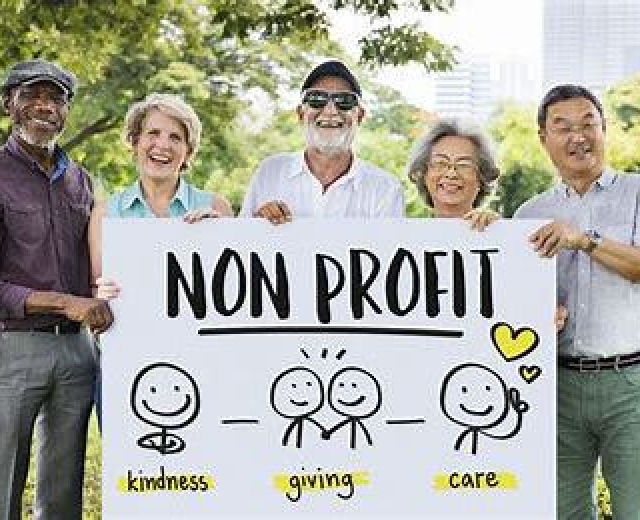
Nonprofit leaders operate in dynamic and often unpredictable environments, requiring not just strategic acumen but also the ability to adapt, learn, and grow. With turbulent shifts in funding, political climates, and operational frameworks, the ability to thrive under pressure becomes critical. Enter the concept of the growth mindset, a powerful framework that empowers individuals, teams, and organizations to turn obstacles into opportunities.
This blog explores what a growth mindset is, why it matters for nonprofit leaders, and actionable steps to cultivate this mindset within yourself, your team, and your organization. We’ll also unpack how fostering a culture of growth can transform how nonprofits address challenges and create meaningful impact.
Understanding the Growth Mindset
What is a Growth Mindset?
Dr. Carol Dweck, a pioneering psychologist, defines a growth mindset as the belief that talents, intelligence, and abilities can be cultivated through effort, learning, and experience. Success, in this perspective, is not just about the outcome but about the journey, the effort invested, and the lessons learned along the way.
On the other side, a fixed mindset assumes that qualities like intelligence and talent are static. Individuals with this mindset may feel an urgency to constantly prove themselves, avoid challenges, and see failure as a reflection of personal inadequacy rather than a learning opportunity.
Key Differences Between Fixed and Growth Mindsets
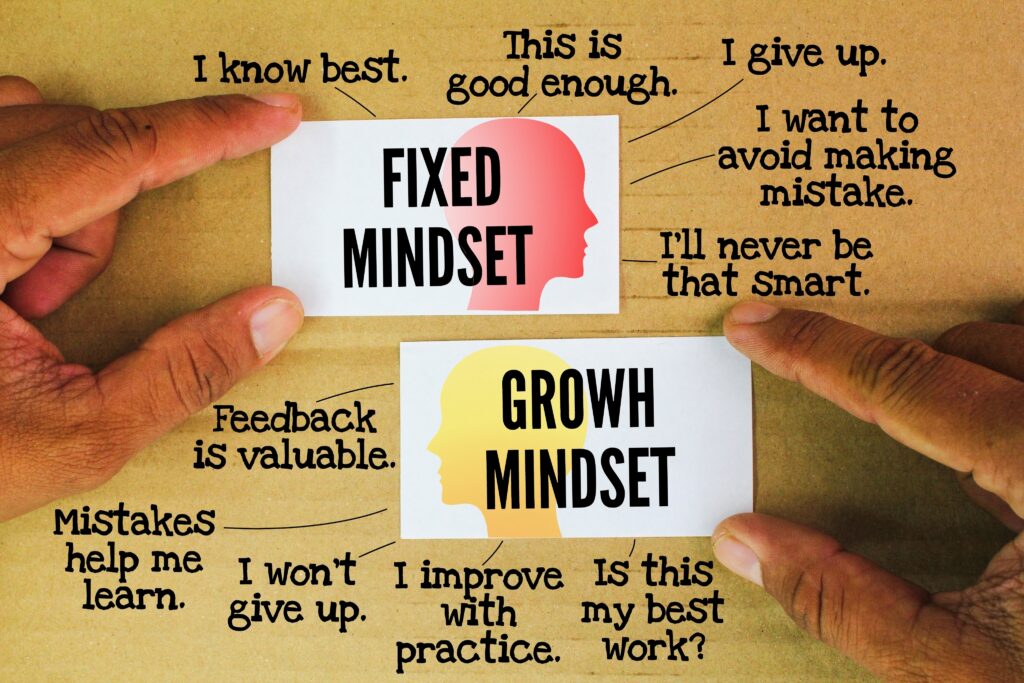
- Fixed Mindset:
-
- Individuals see failure as a personal flaw, prompting them to avoid challenges and risks and focus on proving their abilities
-
- Belief in fixed traits fosters an urgency to demonstrate perceived “sufficient” qualities like intelligence and talent.
-
- Effort is viewed negatively, as it implies a lack of innate capability.
-
- This mindset often prevents learning from challenges or trying new opportunities due to the fear of failure.
- Growth Mindset:
-
- Failure is seen as a source of information, an enjoyable challenge, and a chance to learn.
-
- Belief that skills and abilities are developed through effort, experimentation, and feedback.
-
- Success is measured by growth and improvement rather than outcomes.
-
- Individuals with a growth mindset are open to risk, persistent effort, seeking feedback, and requesting help.
-
- Praise is tied to progress and learning rather than inherent talent, fostering resilience and a continual desire to improve.[1]
Adopting a growth mindset is especially crucial in nonprofit leadership, where barriers such as funding cuts, stakeholder skepticism, or operational inefficiencies may feel insurmountable.
[1] Dweck, C. S. (2008). Mindset. Ballantine Books
Mixture of Fixed and Growth Mindsets
.
Nurturing a Growth Mindset in Education
For over 25 years, I have balanced the responsibilities of leading in the nonprofit sector with teaching sociology. My teaching role has been an environment where I actively foster a growth mindset. I meet my students where they are—as new learners, free of judgment for their gaps in knowledge. Rather than seeing their initial struggles as shortcomings, I view them as opportunities for development. I don’t see my students as reflections of my own success or failure, nor do I attribute their knowledge gaps to their prior education. Instead, I focus on promoting effort and tying that effort to actual performance improvements.
When I see students struggling, I provide them with strategies, guidance, and resources to help them achieve their goals. Criticism or questioning from students doesn’t trigger defensiveness in me. Instead, I treat these moments as opportunities to learn, adapt, and challenge my own assumptions. I’ve come to believe that sustaining a growth mindset is about persistence and an enduring faith in the potential for change.
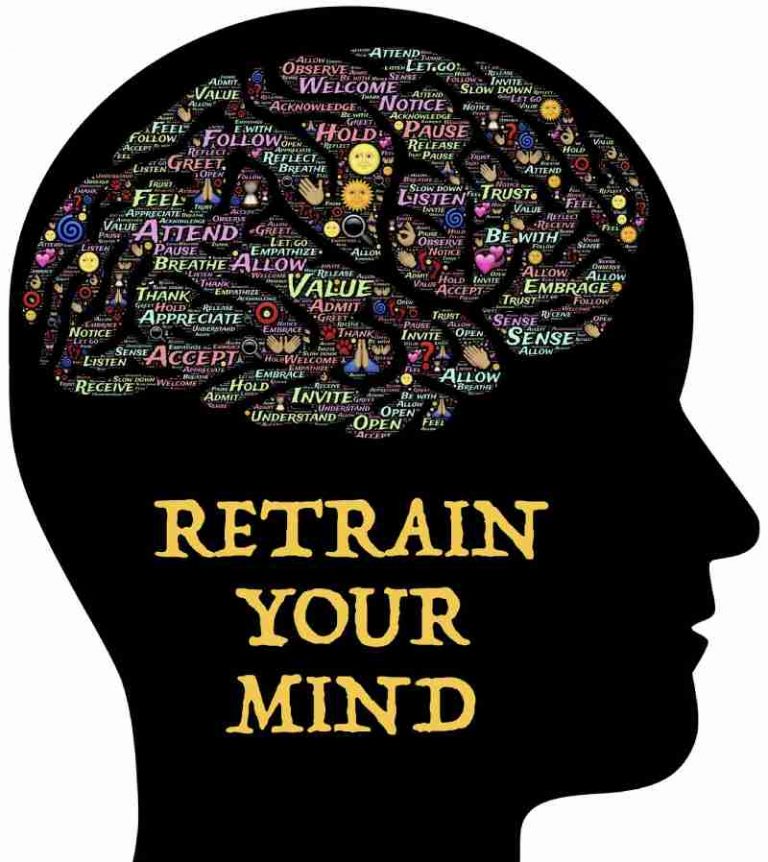
Struggling with a Fixed Mindset in Nonprofit Leadership
However, my experience as a nonprofit leader has illuminated how challenging it can be to maintain a growth mindset in high-stakes environments. Leading a Head Start program, I often found myself facing the pressures of limited resources, staffing shortages, and constant scrutiny. These pressures sometimes led me to operate from a fixed mindset.
For example, I tended to attribute challenges like a lack of qualified teachers solely to systemic issues, such as inadequate wages or flaws in the education system. When faced with criticism, I became defensive and focused on proving I was right rather than listening with an open mind. If I made mistakes, I felt compelled to hide them, driven by a fear of appearing fallible. My inclination to micromanage also limited my ability to empower others or to fully consider alternative perspectives. These behaviors, though unintentional, hindered both my personal growth and the organization’s progress.
Triggers and Barriers to Growth
Understanding what shapes these mindsets is essential for improvement. Several triggers pushed me toward a fixed mindset:
- Fear of failure or criticism
- High-pressure situations with limited resources
- An urge to maintain control or avoid vulnerability
By contrast, promoting and sustaining a growth mindset has required deliberate effort:
- Focusing on collaboration and seeking constructive feedback
- Viewing challenges as opportunities to innovate rather than as obstacles
Reframing failure as part of the learning process rather than as a destination
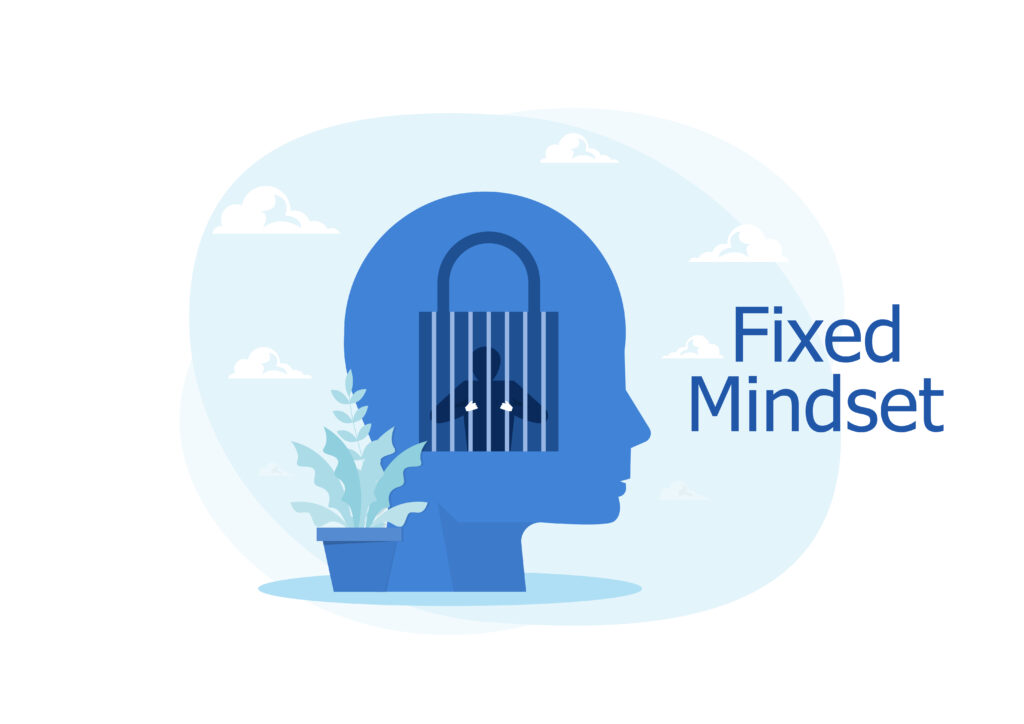
Commitment to Growth
The transition from a fixed to a growth mindset is not a linear process, nor is it one that happens overnight. It is a continuous, intentional journey. For me, progress has come from recognizing when I fall into patterns of judgment, avoidance of challenges, or self-criticism. Awareness is the first step toward change, helping me pause and reframe my perspective.
The most important realization is that a growth mindset is based on the belief in change. It requires full commitment, not to being mistake-free, but to giving every effort in the pursuit of development—for myself and those around me. By discussing these struggles openly, we create opportunities to support each other and foster environments where growth can thrive.
Why Growth Mindset Matters to Nonprofit Leaders
Nonprofit leaders often face external challenges such as unpredictable funding streams, rapid societal changes, and shifting regulatory frameworks. Internally, they must foster collaboration within teams, support professional development, and maintain alignment with the organization’s mission.
A growth mindset enables leaders to tackle these hurdles with resilience and innovation. Leaders with a growth mindset view failures as information and opportunities to recalibrate. They foster environments where creativity is encouraged, continuous learning is celebrated, and setbacks are leveraged for collective improvement.
Developing a Growth Mindset in Yourself [1]
- Acknowledge Your Current Mindset
Everyone is a blend of fixed and growth mindsets, depending on context. Take time to identify areas where you may operate from a fixed perspective. For example, are you reluctant to take risks in certain decisions? Do you get defensive when receiving feedback?
- Reframe Failure as Learning
Failure is not the opposite of success; it’s a step on the path to achieving it. When something doesn’t go as planned, ask yourself, what did I learn? What can I try differently next time?
- Cultivate Curiosity
Leaders with growth mindsets are endlessly curious. Explore new strategies, push yourself outside your comfort zone, and seek input from diverse perspectives to challenge your assumptions.
- Practice Self-Reflection
Make reflection a habit. At the end of each day or week, consider what went well, what could be improved, and what actions you’ll take toward growth.
- Seek Feedback and Use It
Genuine improvement requires honest feedback. Create an environment where colleagues and employees feel safe providing constructive criticism. Use this feedback to modify your strategies and resist any tendency to ignore, minimize or deflect negative feedback.
Great leaders like Winston Churchill and Abraham Lincoln exemplified growth mindsets by fostering environments of learning and teamwork. Winston Churchill created a department dedicated to finding errors, mistakes, and potential obstacles. Similarly, Abraham Lincoln created a cabinet comprised of political rivals, not loyal aides. Adopt methods such as creating think tanks to anticipate challenges or seeking feedback from adversaries to ensure a complete perspective.
- Listen to Frontline Employees
Leaders in successful organizations make it a priority to ask thoughtful questions, actively listen, and collaborate with frontline employees. Alberto Carvalho, superintendent of the Los Angeles Unified School District, exemplified this approach by spending a day working in various roles throughout the district, including as a classroom teacher and cafeteria worker.
Other leaders consistently ask themselves, are we truly as good as we appear, or are we fooling ourselves.
[1] TED. (2014). TEDTalks : Carol Dweck-The power of believing that you can improve. TED: https://www.ted.com/talks/carol_dweck_the_power_of_believing_that_you_can_improve?subtitle=en
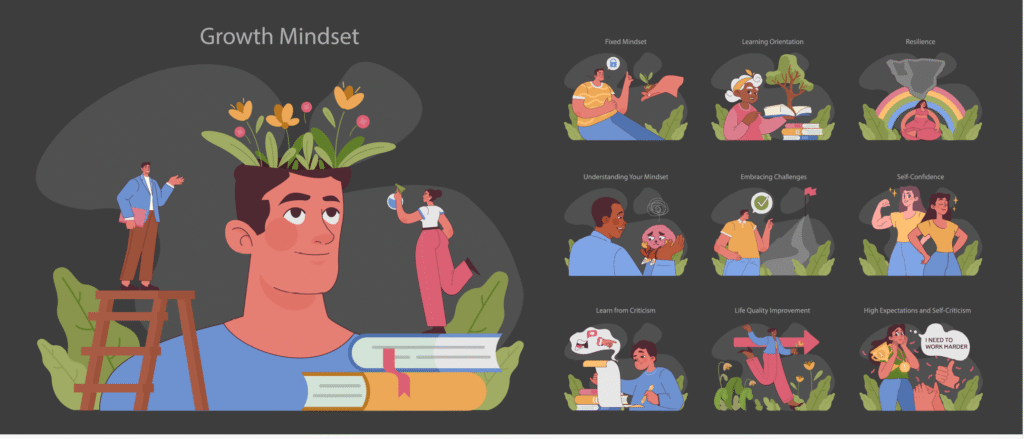
Nurturing a Growth Mindset in Your Managers
A leader’s mindset significantly influences their managers. Here’s how you can uplift your managers’ perspectives for continuous learning and growth.
- Model Growth-Oriented Behavior
Demonstrate resilience by sharing lessons from your mistakes and explaining how you adjusted your approach. When team members see you actively pursuing growth, they are more likely to follow suit.
- Shift Feedback Culture
Feedback should be specific, tied to outcomes, and forward-looking. Recognize effort while offering actionable advice on improving processes and strategies. Avoid vague praise like “great job.” Instead, say, “The creative outreach strategy you implemented connected with donors in a meaningful way. Next time, we could include additional channels to amplify the response.”
- Encourage Risk-Taking
Establish a safe space for your team to try innovative approaches without fear of harsh judgment. Celebrate lessons learned from experiments, regardless of their outcomes.
- Foster Professional Development
Provide resources, training, and mentorship opportunities that allow your team to broaden their skills. Encourage them to pursue workshops, courses, or certifications aligned with both their roles and their passions. An important part of professional development is the opportunity to practice without fear of judgment and incorporate reflection on learning into regular one-on-one meetings.
Many organizations have conducted coaching workshops, which have not been successful. Fostering professional development needs to incorporate specific information on brain development, growing neural connections, and enhancing learning based on a growth mindset.
- Promote Collaborative Learning
Facilitate knowledge-sharing sessions where employees can exchange ideas, strategies, and lessons learned. Collaboration not only builds skills but also strengthens team bonds.
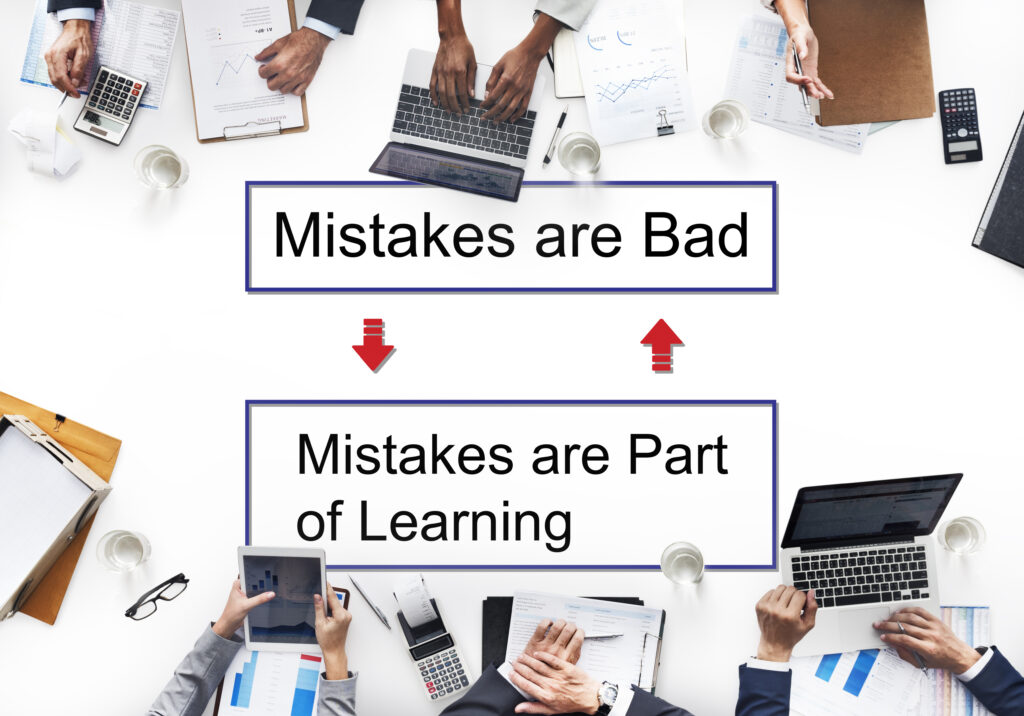
Building an Organization-Wide Culture of Development and Growth
For your entire nonprofit to thrive, a growth mindset must become ingrained in its culture. Promoting a growth mindset within an organization is more than just a strategy; it’s an ongoing commitment to personal and professional development. Building this culture requires dedication, intentional actions, and persistence. Below is a refined roadmap to cultivating a growth-driven workplace, ensuring employees thrive on challenges, own their progress, and grow every day.
Here are actionable steps to build a growth-conscious organization.
- Hire for Growth Mindset
When hiring managers, prioritize candidates who demonstrate a willingness to learn, teach others, and grow through feedback and perseverance.
- Embed Growth Mindset into Core Values
Organizations must explicitly value personal and professional development in their mission and culture. Shift recognition systems to reward persistence, effort, and the commitment to improvement rather than merely celebrating perfect or mistake-free work. When growth is embedded as a foundational belief, employees feel empowered to learn and grow.
- Introduce Growth Mindset Training
Start your organization’s growth mindset initiative with focused training. This can include as few as eight structured sessions that blend educational videos, articles on neuroplasticity, and discussions about the brain’s ability to grow through experience and challenge. Key training concepts include:
- Brain health and physical well-being influence peak mental performance.
- The brain forms new neural pathways when faced with challenges and opportunities.
- Effort is a catalyst for growth—even if not guaranteed to succeed immediately, consistent practice and redefining strategies lead to improvement.
- Daily Growth Reflections [1]
Encourage employees to regularly reflect on their daily progress by answering intentional prompts such as:
- What is something new you learned today?
- What mistake taught you something valuable today?
- Where did you put extra effort today?
- What strategies worked effectively, and which ones should you adjust?
Similarly, begin each day with an intentional growth-focused plan. Questions employees can use to guide their day:
- What opportunities for growth could I engage with today?
- How, when, and where will I act on those opportunities?
- What potential challenges might hinder this plan, and how will I overcome them?
- Provide Growth-Oriented Feedback
- Feedback is a powerful tool in fostering a growth mindset, but it must be delivered in the right way. Praise should focus on effort, persistence, and strategy, rather than innate abilities or talent. Here’s how you can provide effective feedback to nurture development:
- Recognize effort in progress: “You put a lot of effort into this! Now, let’s work together to refine strategies for even better results.”
- Acknowledge the learning curve: “Everyone learns at different paces. If you stay consistent and try new approaches, you’ll get there.”
- Reinforce resilience: “It’s disappointing not to win when you’ve worked hard, isn’t it? Remember, many others here have spent years refining their craft. If this goal really matters to you, keep going, and it will come with time and effort.”
- Avoid praising quickness, talent, or perfection as it undermines the value of true learning, which is a gradual and iterative process. Instead, deliver praise that reinforces perseverance, long-term commitment, and creative problem-solving.
- Validate and Support Emotional Experiences
- Part of fostering a growth mindset is recognizing the emotional side of challenges. Validate employees’ feelings while encouraging them to focus on learning. For example:
- “It’s hard not to feel judged, but we’re here to support your growth.”
- “I’m proud of how you’ve stuck with this and kept on learning.”
- “I understand how disappointing this is, but it’s a step in building the skills you want to achieve your goals.”
[1] TED. (2014). TEDTalks : Carol Dweck-The power of believing that you can improve. TED: https://www.ted.com/talks/carol_dweck_the_power_of_believing_that_you_can_improve?subtitle=en

Transformative Results of a Growth Mindset Culture
When a growth mindset becomes your organization’s backbone, the results are profound.
- Resilience
Teams and leaders thrive in uncertain environments, tackling challenges with confidence and creativity.
- Greater Innovation
Risk-taking and openness to new ideas drive more inventive and effective solutions to pressing problems.
- Stronger Employee Engagement
When team members feel supported in their growth, workplace satisfaction and loyalty increase.
- Improved Outcomes
Programs, strategies, and services continually improve, amplifying your nonprofit’s impact on the community.
Building a Growth Mindset Culture
Building a culture of growth mindset requires cultivating a space where learning is prioritized, failures are viewed as opportunities to improve, and persistence is celebrated. Enable employees to reflect, experiment, and refine their strategies daily. It’s not perfection that counts but the courage to show up, try, and grow.
Adopting a growth mindset is no longer optional for nonprofit leaders. It’s a necessity in facing the complexities of turbulent times. Start by reflecting on your leadership approach, then take purposeful steps to incorporate growth-oriented principles into your team and organizational culture.
With the right strategies, your organization can create an environment that unlocks everyone’s potential and fuels collective growth. Taking these actions will not only transform your leadership but also elevate your team and organization to greater heights of resilience, innovation, and impact.
Remember, every substantial change starts small. One step forward toward growth, and you’re already making progress.
- Request a Free Training Consultation by reaching out to Sunshine Nonprofit Solutions.
- Email me directly for conversations and sharing of ideas
- Stay updated with leadership development ideas and nonprofit trends by subscribing to our blog
.
About Dr. Cathleen Armstead
Dr. Cathleen Armstead is a distinguished leader in the nonprofit sector, bringing over 25 years of experience in program evaluation, leadership development, and nonprofit management. She is the founder of Sunshine Nonprofit Solutions, a consulting firm dedicated to empowering nonprofit organizations and Head Start programs to maximize their impact. Known for her strategic vision and evidence-based approaches, Dr. Armstead has revolutionized how organizations achieve sustainable growth and deliver meaningful services to their communities.
With a dynamic career spanning decades, Dr. Armstead has held pivotal roles in nonprofit operations and leadership. Her accomplishments include:
Dr. Armstead’s passion for advocacy is rooted in her commitment to improving the lives of low-income and disadvantaged populations. Over the years, her work has influenced policies at the local, state, and national levels, driving initiatives that promote equity and opportunity.
When she’s not mentoring nonprofit leaders or conducting research, Dr. Armstead enjoys swimming, biking, and exploring new cultures through travel. These personal pursuits further reflect her adventurous and dynamic approach to both life and leadership.
Lorem ipsum dolor sit amet, consectetur adipiscing elit. Ut elit tellus, luctus nec ullamcorper mattis, pulvinar dapibus leo.
